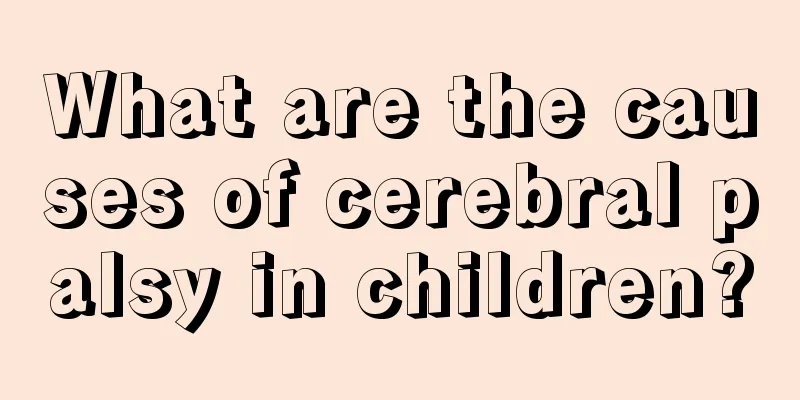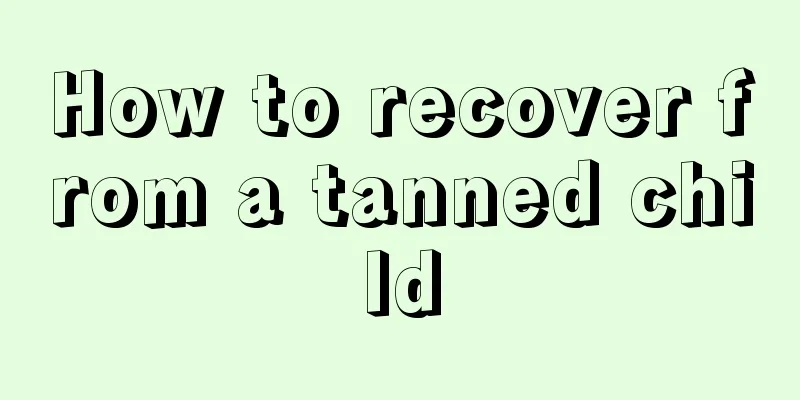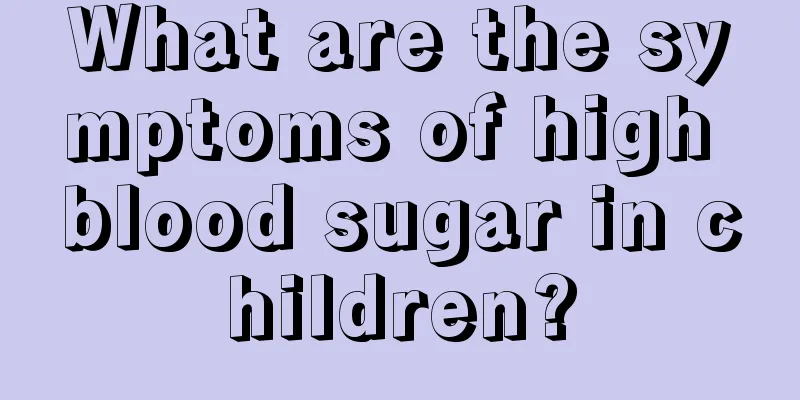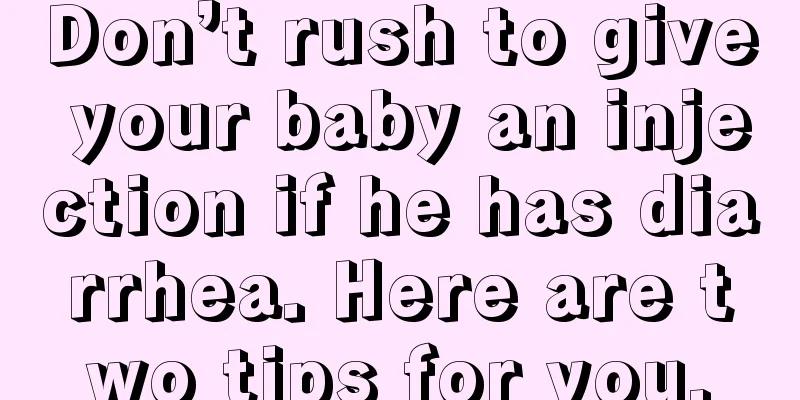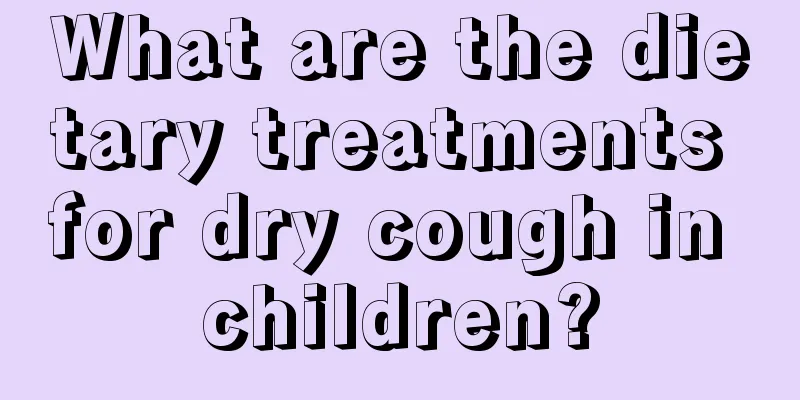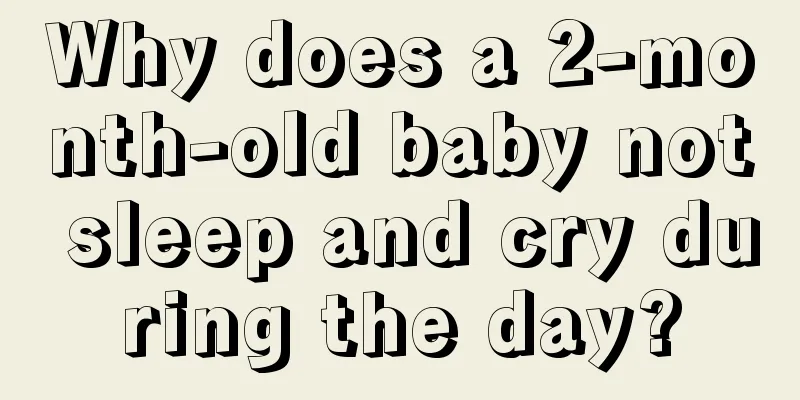What to do if a child has a viral fever
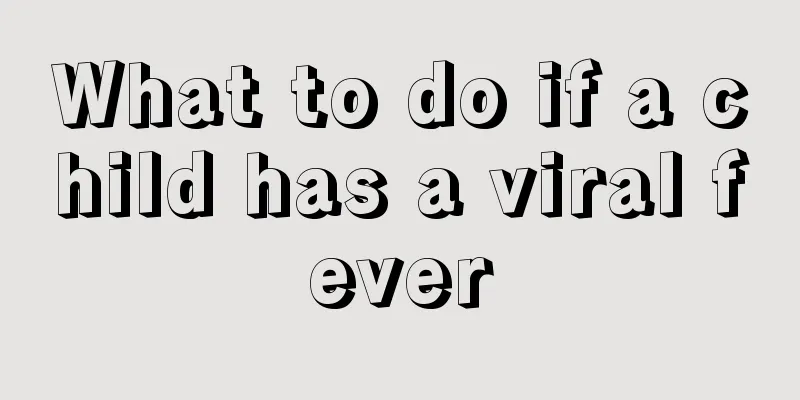
|
Young children are still young and relatively weak, so they are easily infected when they have diseases such as influenza. Generally, many parents will be very anxious when a viral fever occurs. In fact, in such a situation, as long as we pay close attention to the child’s body temperature, there will generally be no problem. So what should we do if a child has a viral fever? Let’s learn more about it through the following introduction, and I hope it will be helpful to mothers. 1. Physical cooling (1) Drink more warm water, vegetable juice and fruit juice. Let your baby drink more water and replenish body fluids. This is the most basic method of reducing fever. It is very effective and practical and suitable for all babies with fever. Do not give your baby cold water, because fever is often accompanied by gastrointestinal symptoms and coughing. Drinking cold water will aggravate these accompanying symptoms. Give your baby warm water. (2) Warm water bath, that is, wipe the whole body with a warm water towel. This is a great way to cool down any baby who has a fever. The water temperature should be between 32℃ and 34℃, and each wiping should last for more than 10 minutes. The key areas to wipe are the skin folds, such as the neck, armpits, elbows, groin, etc. (3) Warm water bath: The water temperature should be approximately 3°C to 4°C lower than the patient’s body temperature, and each bath should last for 5 to 10 minutes. Many parents think that babies should not be bathed when they have a fever. In fact, on the contrary, giving babies a warm bath can help cool them down. A warm bath is suitable for all babies with a fever. (4) Low-temperature chamber method: Place the sick child in an environment with a room temperature of approximately 24°C to allow the body temperature to slowly drop. In order to allow the skin to come into contact with the outside air and help cool down, people need to wear less clothes. If conditions permit, use air conditioning to lower the room temperature. This method is suitable for babies under 1 month old, especially in summer. Just open the baby's clothes and put him in a cool place, his body temperature will slowly drop. If your baby has chills and shivering when having a fever, you should not use the low-temperature chamber method. (5) Cooling patches: Cooling patches are a new product in recent years and are very popular. However, their cooling effects are generally average and not as good as advertised. Putting a patch on the baby's forehead will make the baby's head feel more comfortable and the parents will feel more at ease too. It should be beneficial and harmless. (6) Ice compress: There is still much controversy regarding the pros and cons of this method. Some experts believe that ice compresses do more harm than good, because they may cause the capillaries in the baby's skin to contract, hindering heat dissipation and causing the body temperature to be higher, especially if accompanied by chills and shivering. Ice compresses should not be used. 2. Drug treatment If the baby's temperature is still over 38.5℃ after physical cooling treatment, medication should be used to reduce the fever. Since infants and young children have a high water content in their bodies, they are very susceptible to dehydration. Therefore, parents must encourage their infants and young children to drink more boiled water. 3. Daily care Parents should take their children to public places less often. Children’s food must be strictly controlled, and tableware and toys must be disinfected regularly. When the weather turns cold, you should be cautious when eating raw or cold food, and it is best to eat fruit half an hour after a meal. At the same time, you should pay attention to keeping warm and avoid catching cold, which may cause respiratory and digestive tract diseases and reduce the body's resistance. 4. Diet therapy To reduce the burden on the digestive tract, the diet should be based on starchy foods, such as millet porridge, rice porridge, and paste. After the diarrhea stops, your child can be given the nutrients lost due to diarrhea. For children with poor physical constitution, physical therapy methods such as massage can also alleviate diarrhea symptoms, increase the body's tolerance and shorten the course of the disease. Through the above introduction, we know what to do if a young child has a viral fever. If the child's condition does not improve after the above care, we must go to the hospital with the child for examination and treatment. After finding out the cause, symptomatic treatment will be more effective. Pay close attention to the child's condition and body temperature during the child's fever. |
<<: What to do if your child has a fever at night
>>: Why do babies yawn all the time?
Recommend
When your child has a fever, here are six rules to help you deal with it calmly
Every time a child has a fever, the whole family ...
Symptoms of hip dislocation in children
Most of the time, hip dislocation in adults is ca...
What can you eat to grow taller during the growth period?
Development refers to all aspects of a child'...
What happens if water gets into the baby's ears?
In daily life, if parents do not take proper care...
Baby expectorant diet
Many newborns suffer from coughing, and most of t...
Causes of perianal abscess in newborns
Perianal abscess in newborns is a relatively comm...
Baby's nose bridge and eye corners are blue
Once the baby's nose bridge and eye corners t...
What's going on with a six-year-old child having a nosebleed?
Children often have nosebleeds, and the reasons a...
The harm of persistent low-grade fever in babies
Persistent low-grade fever is quite harmful and m...
White spots on the little finger, could it be vitiligo?
First of all, I can tell you very clearly that th...
How to treat ascites in children
Pleural effusion is a very serious disease. This ...
What tests should be done for children with autism?
Autism endangers children's health and even a...
How to guide children correctly
Because children are in adolescence, coupled with...
Seven-year-old girl has a lump in her breast
A seven-year-old girl has lumps in her breasts. T...
What are the dangers of having a child who is too fat?
If a child is too fat, it is not good for his hea...
